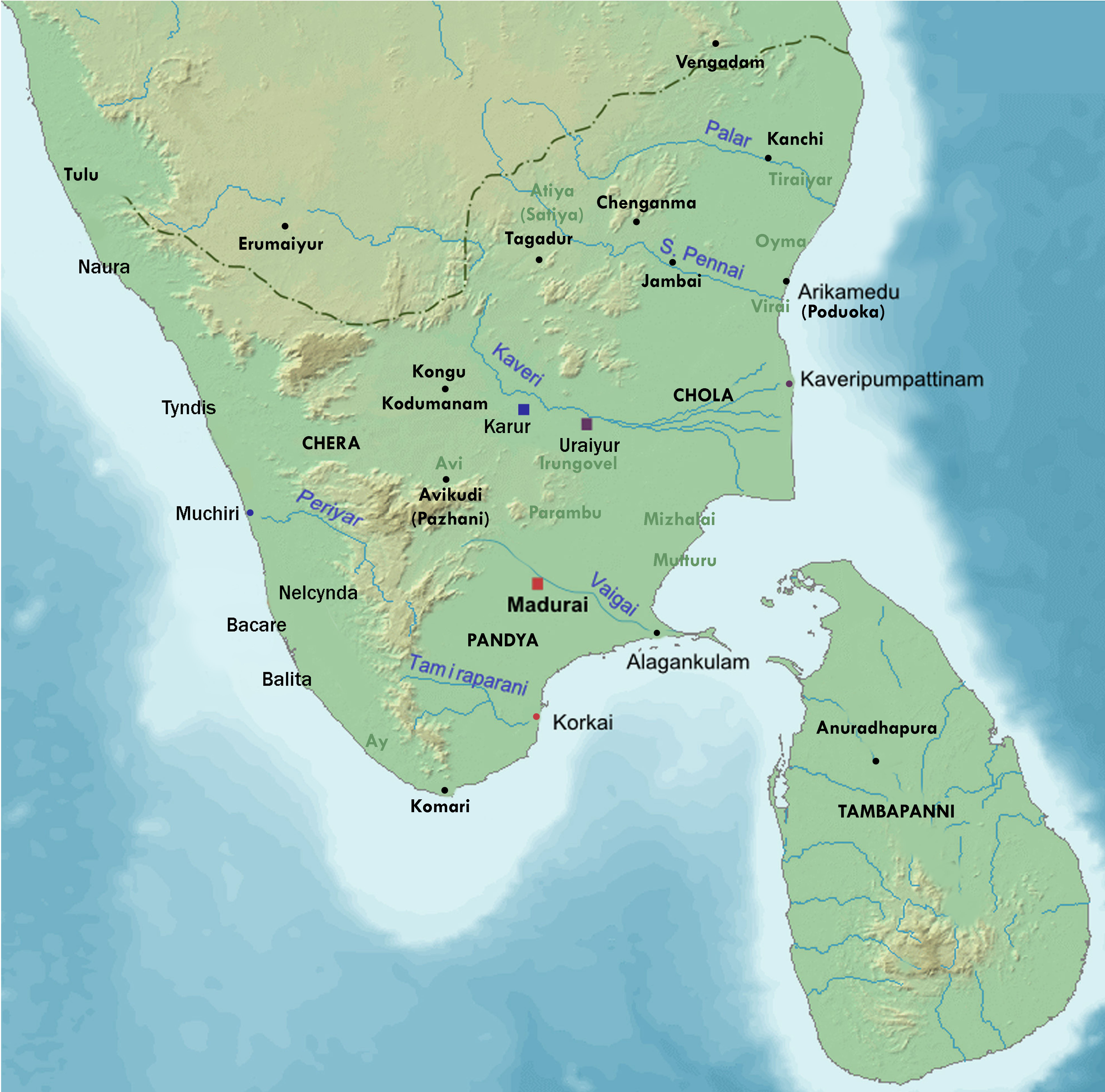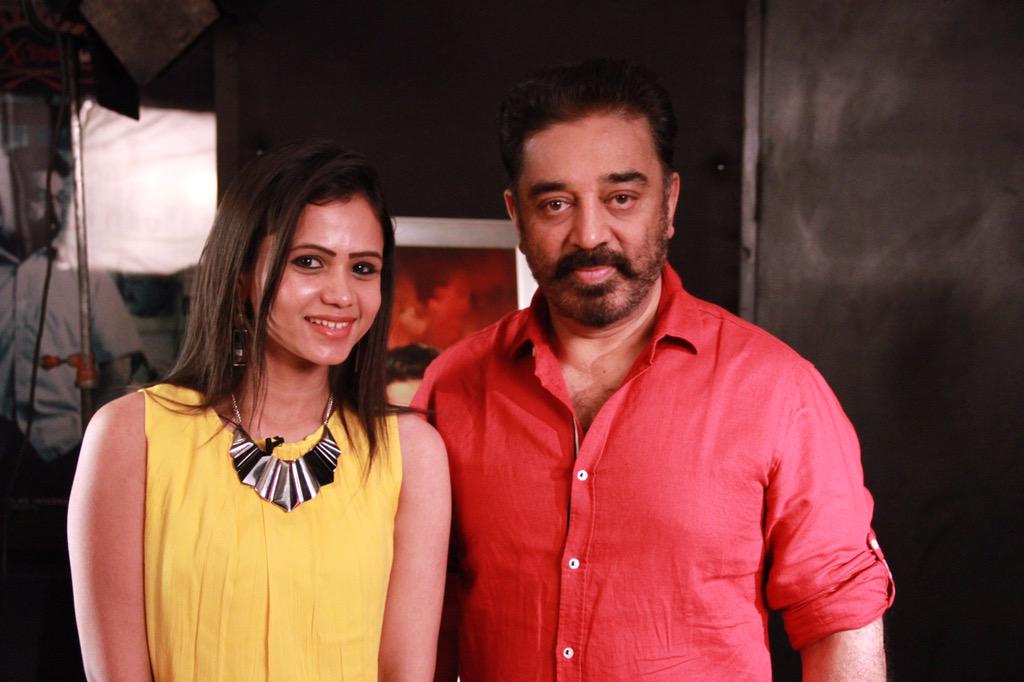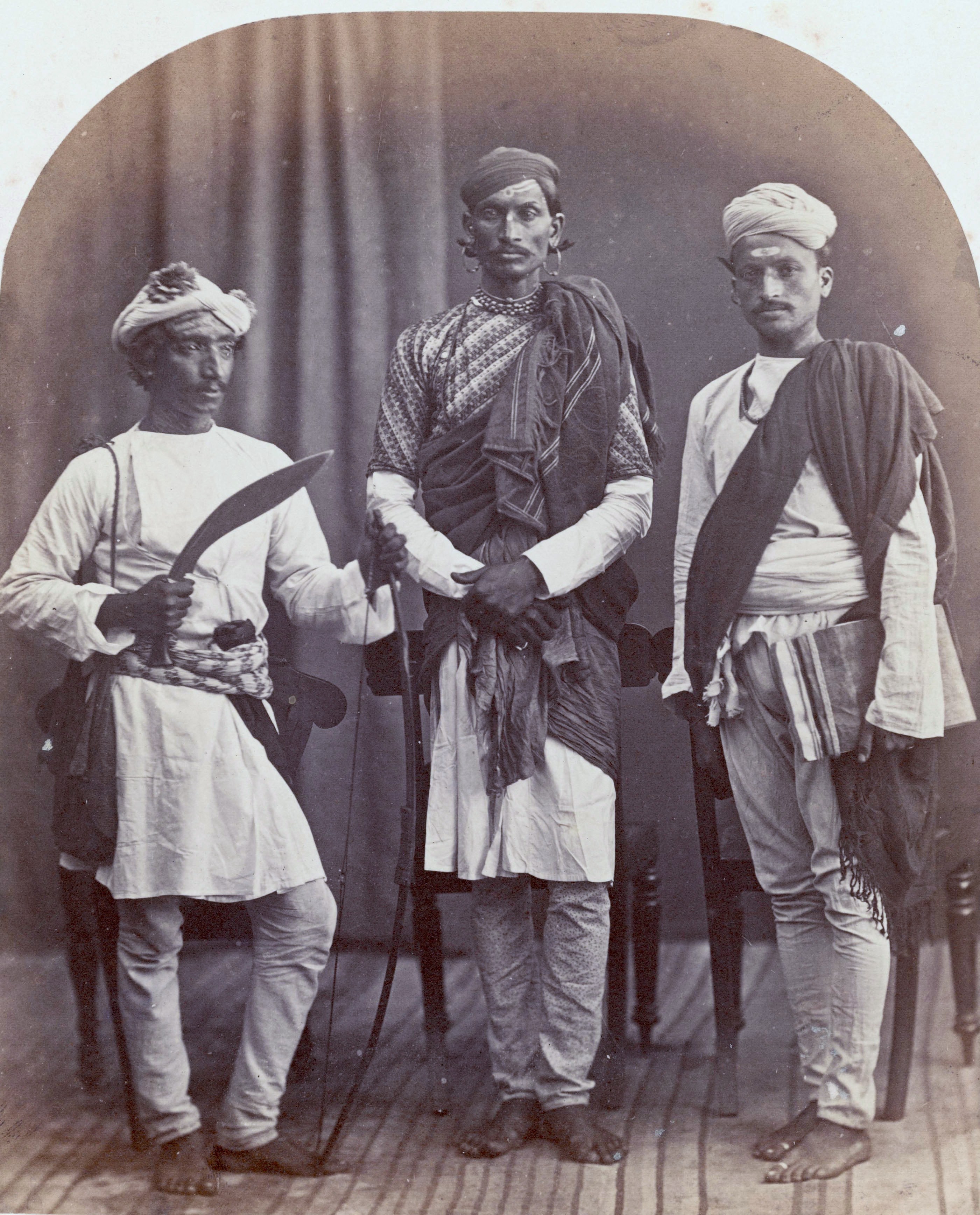|
Cīvaka Cintāmaṇi
''Civaka Cintamani'' ( ta, சீவக சிந்தாமணி, lit=Jivaka, the Fabulous Gem, translit=Cīvaka Cintāmaṇi), also spelled as ''Jivaka Chintamani'', is one of the five great Tamil epics. Authored by a Madurai-based Jain ascetic Tiruttakkatēvar in the early 10th century, the epic is a story of a prince who is the perfect master of all arts, perfect warrior and perfect lover with numerous wives. The ''Civaka Cintamani'' is also called the ''Mana Nool'' ( ta, மண நூல், lit=book of marriages, translit=Maṇa nūl).Ramaswamy 2007, pp. 102-103 The epic is organized into 13 cantos and contains 3,145 quatrains in ''viruttam'' poetic meter. Its Jain author is credited with 2,700 of these quatrains, the rest by his ''guru'' and another anonymous author. The epic begins with the story of a treacherous coup, where the king helps his pregnant queen escape in a peacock-shaped flying machine but is himself killed. The queen gives birth to a boy. She hands hi ... [...More Info...] [...Related Items...] OR: [Wikipedia] [Google] [Baidu] |
Veena
The ''veena'', also spelled ''vina'' ( sa, वीणा IAST: vīṇā), comprises various chordophone instruments from the Indian subcontinent. Ancient musical instruments evolved into many variations, such as lutes, zithers and arched harps.Vina: Musical Instrument Encyclopædia Britannica (2010) The many regional designs have different names such as the '' Rudra veena'', the '''', the '''' and others. The North Indian ''rudra veena'', u ... [...More Info...] [...Related Items...] OR: [Wikipedia] [Google] [Baidu] |
Tamil Jain
Tamil Jains ( Tamil Samaṇar, from Prakrit '' samaṇa'' "wandering renunciate") are Tamils from Tamil Nadu, India, who practice Jainism (Tamil ). The Tamil Jain is a microcommunity of around 85,000 (around 0.13% of the population of Tamil Nadu), including both Tamil Jains and north Indian Jains settled in Tamil Nadu. They are predominantly scattered in northern Tamil Nadu, largely in the districts of Tiruvannamalai, Kanchipuram, Vellore, Villupuram, Ranipet and Kallakurichi. Early Tamil-Brahmi inscriptions in Tamil Nadu date to the third century BCE and describe the livelihoods of Tamil Jains. ''Samaṇar'' wrote much Tamil literature, including the important Sangam literature, such as the '' Nālaṭiyār'', the ''Silappatikaram'', the '' Valayapathi'' and the '' Seevaka Sinthamaṇi''. Three of the five great epics of Tamil literature are attributed to Jains. History Origins Some scholars believe that Jain philosophy must have entered South India some time in the sixth c ... [...More Info...] [...Related Items...] OR: [Wikipedia] [Google] [Baidu] |
Chola Dynasty
The Chola dynasty was a Tamil thalassocratic empire of southern India and one of the longest-ruling dynasties in the history of the world. The earliest datable references to the Chola are from inscriptions dated to the 3rd century BCE during the reign of Ashoka of the Maurya Empire. As one of the Three Crowned Kings of Tamilakam, along with the Chera and Pandya, the dynasty continued to govern over varying territories until the 13th century CE. The Chola Empire was at its peak under the Medieval Cholas in the mid-9th century CE. The heartland of the Cholas was the fertile valley of the Kaveri River. They ruled a significantly larger area at the height of their power from the later half of the 9th century till the beginning of the 13th century. They unified peninsular India south of the Tungabhadra River, and held the territory as one state for three centuries between 907 and 1215 CE. K. A. Nilakanta Sastri, ''A History of South India'', p 157 Under Rajaraja I ... [...More Info...] [...Related Items...] OR: [Wikipedia] [Google] [Baidu] |
Kambar (poet)
Kambar or Kavichakravarthy Kamban (1180 CE–1250 CE) was an Indian Tamil poet and the author of the Ramavataram, popularly known as ''Kambaramayanam'', the Tamil version of the epic Ramayana.The Cyclopaedia of India and of Eastern and Southern Asia By Edward Balfour Kambar also authored other literary works in Tamil, such as Thirukkai Vazhakkam, ''Erezhupathu'', Silaiyezhupathu, ''Kangai Puranam'', ''Sadagopar Anthathi'' and ''Saraswati Anthathi''. Life Kambar was born in Therazhundur. His father was a wealthy farmer named Sadaiyepa Vallal. He grew up the Chola Empire under the reign of Kulothunga III. Having heard of this talented bard, Kulothunga summoned him to his court and honoured him with the title ''Kavi Chakravarty'' (''The Emperor of Poets''). Kambar flourished in Therazhundur, a village in the culturally rich Nagapattinam District in the modern state of Tamil Nadu in South India. Kambar is generally dated after the vaishnavite philosopher, Ramanuja, as ... [...More Info...] [...Related Items...] OR: [Wikipedia] [Google] [Baidu] |
Ramayana
The ''Rāmāyana'' (; sa, रामायणम्, ) is a Sanskrit epic composed over a period of nearly a millennium, with scholars' estimates for the earliest stage of the text ranging from the 8th to 4th centuries BCE, and later stages extending up to the 3rd century CE. ''Ramayana'' is one of the two important epics of Hinduism, the other being the ''Mahābhārata''. The epic, traditionally ascribed to the Maharishi Valmiki, narrates the life of Sita, the Princess of Janakpur, and Rama, a legendary prince of Ayodhya city in the kingdom of Kosala. The epic follows his fourteen-year exile to the forest urged by his father King Dasharatha, on the request of Rama's stepmother Kaikeyi; his travels across forests in the Indian subcontinent with his wife Sita and brother Lakshmana, the kidnapping of Sita by Ravana – the king of Lanka, that resulted in war; and Rama's eventual return to Ayodhya to be crowned king amidst jubilation and celebration. The ''Ramayana'' is ... [...More Info...] [...Related Items...] OR: [Wikipedia] [Google] [Baidu] |
Kundalakesi
''Kundalakesi'' ( ta, குண்டலகேசி Kuṇṭalakēci, ''lit.'' "woman with curly hair"), also called ''Kuntalakeciviruttam'', is a Tamil Buddhist epic written by Nathakuthanaar, likely sometime in the 10th-century.Aiyangar 2004, p. 360 The epic is a story about love, marriage, getting tired with the married partner, murder and then discovering religion. The ''Kundalakesi'' epic has partially survived into the modern age in fragments, such as in commentaries written centuries later. From these fragments, it appears to be a tragic love story about a Hindu or Jain girl of merchant caste named Kundalakesi who falls in love with Kalan – a Buddhist criminal on a death sentence. The girl's rich merchant father gets the criminal pardoned and freed, the girl marries him. Over time, their love fades and they start irritating each other. During an argument, Kundalakesi reminds him of his criminal past which angers Kalan. A few days later, he invites her to a hike up a h ... [...More Info...] [...Related Items...] OR: [Wikipedia] [Google] [Baidu] |
Valayapathi
''Valaiyapadhi'' ( ta, வளையாபதி, lit=Unbending Man, translit=Vaḷaiyāpati; ), also spelled ''Valayapathi'', is one of the five great Tamil epics, but one that is almost entirely lost. It is a story of a father who has two wives, abandons one who gives birth to their son, and the son grows up and seeks his real father. The dominant emotion of this epic is love, and its predominant object is the inculcation of Jain principles and doctrines. Palm-leaf manuscripts of the epic likely existed until the 19th-century, but presently only uncertain fragments of the epic are known from commentaries and the 14th-century anthology ''Purattirattu''. Based on these fragments, the epic appears to be the story of a merchant with an overseas trading business who married two women. He abandoned one, who later gives birth to his son. He has children with the other wife too. The abandoned son is bullied by overseas kids for not knowing the name of his father. His mother then di ... [...More Info...] [...Related Items...] OR: [Wikipedia] [Google] [Baidu] |
Silappadikaram
''Cilappatikāram'' ( ta, சிலப்பதிகாரம் ml, ചിലപ്പതികാരം,IPA: ʧiləppət̪ikɑːrəm, ''lit.'' "the Tale of an Anklet"), also referred to as ''Silappathikaram'' or ''Silappatikaram'', is the earliest Tamil epic. It is a poem of 5,730 lines in almost entirely ''akaval'' (''aciriyam'') meter. The epic is a tragic love story of an ordinary couple, Kannaki and her husband Kovalan. The ''Silappathikaram'' has more ancient roots in the Tamil bardic tradition, as Kannaki and other characters of the story are mentioned or alluded to in the Sangam literature such as in the ''Naṟṟiṇai'' and later texts such as the ''Kovalam Katai''. It is attributed to a prince-turned-monk Iḷaṅkõ Aṭikaḷ, and was probably composed in the 5th or 6th century CE. The ''Silappatikaram'' is set in a flourishing seaport city of the early Chola kingdom. Kannaki and Kovalan are a newly married couple, in love, and living in bliss. Over time, Ko ... [...More Info...] [...Related Items...] OR: [Wikipedia] [Google] [Baidu] |
Manimegalai
Manimegalai is an Indian television presenter and video jockey who is working in Tamil television industry for almost 12 years. Since 2010, she has regularly been a host for shows on Sun Network before joining Star Vijay in 2019. She gained followers for her boldness in expressing her thoughts and for raising her voice against odds. She is currently participating as comali in Cook with comali (Season 3) along with hosting programs on Vijay TV. Personal life Manimegalai was born in Tiruppur district, Tamil Nadu to businessman Ramaayyappan and Jothimani. She has a younger sibling, Gunamani, who is a Visual Communications graduate. Until class 3, Manimegalai studied in Coimbatore, and then moved to Chennai with her family and continued her schooling at Shanthosh Vidyala Matriculation School. She completed her MBA(dual) in HR & Finance from SRM university (Vadapalani Campus). While at college she started performing as a video jockey on Sun Music. She met assistant choreogra ... [...More Info...] [...Related Items...] OR: [Wikipedia] [Google] [Baidu] |
The Five Great Epics Of Tamil Literature
The Five Great Epics ( ta, ஐம்பெரும்காப்பியங்கள் ''Aimperumkāppiyaṅkaḷ'') are five Tamil epics according to later Tamil literary tradition. They are '' Silappatikāram'', ''Manimekalai'', ''Cīvaka Cintāmaṇi'', ''Valayapathi'' and '' Kuṇṭalakēci''. Three of the five great epics of Tamil literature are attributed to Tamil Jains, while two are attributed to Tamil Buddhists. ''Cīvaka Cintāmaṇi'', '' Cilappatikāram'', and ''Valayapathi'' were written by Tamil Jains, while ''Manimekalai'' and '' Kuṇṭalakēci'' were authored by Buddhists. The first mention of the ''Aimperumkappiyam'' (lit. Five large epics) occurs in Mayilainathar's commentary of ''Nannūl''. However, Mayilainathar does not mention their titles. The titles are first mentioned in the late-18th-to-early-19th-century work ''Thiruthanikaiula''. Earlier works like the 17th-century poem ''Tamil vidu thoothu'' mention the great epics as ''Panchkavyams''. Amon ... [...More Info...] [...Related Items...] OR: [Wikipedia] [Google] [Baidu] |
Shudra
Shudra or ''Shoodra'' (Sanskrit: ') is one of the four ''Varna (Hinduism), varnas'' of the Hindu caste system and social order in ancient India. Various sources translate it into English as a caste, or alternatively as a social class. Theoretically, class serving other three classes. The word caste comes from the Portuguese word casta. The word ''Shudra'' appears in the ''Rig Veda'' and it is found in other Hindu texts such as the ''Manusmriti'', ''Arthashastra'', ''Dharmashastras'' and ''Jyotish#Zodiac, Jyotishshastra''. In some cases, shudras participated in the coronation of kings, or were Minister (government), ministers and kings according to early Indian texts. History Vedas The term ''śūdra'' appears only once in the ''Rigveda''. This mention is found in the mythical story of creation embodied in the ''Purusha Sukta ("The Hymn of Man").'' It describes the formation of the four varnas from the body of a Purusha, primeval man. It states that the brahmin emerged from h ... [...More Info...] [...Related Items...] OR: [Wikipedia] [Google] [Baidu] |








